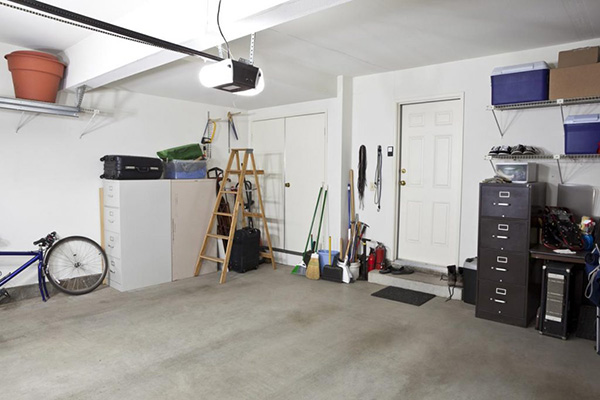Looking for a dehumidifier for your garage? Garages are great for keeping the weather off your vehicle and for storing important items, especially tools. But they are not usually insulated and temperature controlled the same way as our homes’ internal spaces. That can lead to a lot of excess moisture, whether it is hot and humid or chilly and dank. Because humidity levels over 50% can lead to the growth of mold and mildew, getting a dehumidifier may be primarily a health concern. But overly moist environments can also destroy the items you have stored there, especially metal items and vehicles.
High humidity in a garage can lead to permanent damage to equipment and materials, as well as cause a rise in pests and mold. Overall, the best solution to a garage which traps humidity in any season is a garage dehumidifier. These are smaller units than whole-house dehumidifiers and are also cheaper and easier to set up.
We’ll show you what to look for in the best dehumidifier for garage use, including five top rated products. All of these products are reviewed using the MentorMethodology, and the reviews are backed by hundreds of purchases and feedback from our readers. For you “get to the answer” type folks, click here to jump down to our detailed garage dehumidifier reviews & product comparison.
There are several different types of dehumidifier, but for garage use, we’ll be looking at electric models with a fairly high capacity. These dehumidifiers are plugged into a wall outlet in order to power a compressor that pulls moist air over a set of chilled coils. The cold coils cause water in the air to condense; it then drips into a containment bucket or through an attached hose into a drain of some kind.
Other kinds include the desiccant dehumidifier, which uses silica gel beads to absorb moisture, and air dryers, which rely on heat and natural convection to dry out the air nearby. Both of these versions are better suited for small, enclosed spaces. They can’t handle enough moisture to achieve the results you need in a space like the garage, which usually lacks insulation and has cold, concrete floors.
Signs You Need a Garage Dehumidifier
Before you take the plunge and decide to start looking for a great garage dehumidifier, you’ll want to make sure that you need one. You can tell from several key signs which you can collect by taking a quick walk around your garage, observing as you go.
Mold and Musty Odors
Use your eyes and nose and pay attention to any new growths of mold that might be popping up in the corners of your garage. Mold will often appear in corners or near windows, where condensation tends to collect. Mold is really easy to find; just look for dark spots or fungal growths that are a different color from your garage’s walls or floor.
Musty odors are another telltale sign of mold growing where you can’t see it. Mold and mildew love to grow in small, dark places that are hard to clean, so rely on your sense of smell to inform you about any unnoticed fungal guests.
Water Damage and Excessive Condensation
Condensation occurs when your garage collects too much moisture from the air. This isn’t a problem by itself, but excess condensation can fuel the growth of mold and mildew. In addition, too much water in your garage can lead to wet, leaky places everywhere, damaging tools, wood, or your supplies. Water damage in your garage can be quite expensive to replace.
Allergy Flare-Ups
If anyone in your family dislikes spending time in the garage due to allergic reactions, it’s a good sign that there are insects which are breeding or mold and mildew. Reducing the humidity in your garage will assist with both of these possible allergy starters.
Rotting Wood
Termites and other insects will often be attracted to wet, rotting wood, which is caused by excess moisture in the air. If you see wood that’s turning color and starting to crack, you might expect to see some small, buggy guests sooner rather than later.
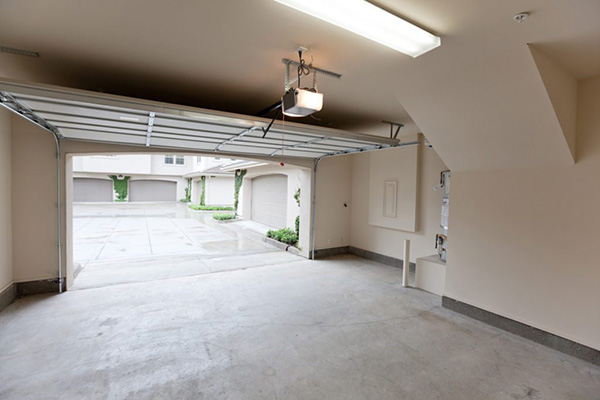
What to Look for in a Garage Dehumidifier
The best dehumidifier for garage will be designed to pull and hold a large amount of liquid. You will want one that’s big enough to do the job without needing to be emptied every few hours, yet small enough to fit into the space you have available. Following are a few other considerations that can help you choose the perfect model for you.
Design
Dehumidifiers in general are boxy, taller than they are wide, but they do come in a variety of dimensions. Make note of the size of the machine before you purchase one, as a few inches difference in height and width can affect whether your unit fits under a workbench or comfortably in a corner. It can also be helpful to get a dehumidifier that is on caster wheels in order to make moving it easy.
Temperature Tolerance
One of the limitations of dehumidifiers is that they don’t work extremely well in cold conditions. Your most humid months will probably also be the warmest, but chilly autumn mornings can be quite foggy as well, and snow dripping off the car can really dampen a garage. For use in the garage, especially if it lacks insulation, you will want a dehumidifier that can handle relatively cold conditions. Some units have built-in features to de-ice the coils if they become frozen, or to make sure the compressor shuts off when the coils are too cold to do their job.
Efficiency
The energy efficiency of your dehumidifier greatly affects the operation cost. Electricity is the single biggest element of this, so be sure to look for a model with an Energy Star rating. It also helps to get one that’s large enough to do the job without struggling. It will be able to cycle off more frequently, thus saving power.
Construction
The higher the capacity and the more features that are built-in, the more costly your unit is likely to be. But it is worth it to pay for solid construction! Otherwise you’ll be shelling out again for a new dehumidifier in a year or two when the cheap plastic fan breaks. Though the external housing is almost always made of plastic (some higher end industrial models have metal shells), you can still find dehumidifiers with solid stainless steel or brass fans and coils. A dehumidifier with a relatively long warranty means the company has confidence in their workmanship.
Dehumidifier Capacity
Certain garage dehumidifiers are sized and powered for large garages. Obviously, if you’ve got a small space to work with, you can get away with buying a more energy-efficient model and not lose anything in terms of reward. Keep your dehumidifier energy-efficient by buying one that’s sized and powered proportionately to your garage.
In terms of pints, anything above a 50 pint dehumidifier is enough for a two-car garage, but we recommend upsizing to a 70 pint dehumidifier in almost all cases. Anything below 30 should be considered for smaller, one-car garages. Larger dehumidifiers capable of square feet over 3000 should be used for two-car garages, and likewise, those with ratings lower than 3000 square feet should be used for 1-car garages.
Noise Level
If you plan to work in your garage at the same time as your dehumidifier, think about finding a model that doesn’t whine very loudly. Otherwise, you might grow sick of it after a little while. Like any other device, your garage dehumidifier measures its ambient noise in decibels. This information can be found easily, and is something you’ll want to check if you are sensitive to loud sounds.
Methods of Water Management
In general, there are three different ways that your dehumidifier could deal with the collected water.
1. Bucket model
Pretty much all dehumidifiers have a containment bucket that collects water. You will need to empty it every so often depending on how humid your garage is. Once the bucket fills, the dehumidifier will shut off automatically and not run again until you dump the water. This can be labor intensive, but requires no special set up. All of the models on our list also have a continuous drain option; these use one of two mechanisms to work.
2. Gravitational force model
If your dehumidifier comes with an attached hose, or has the option to attach an aftermarket hose, this can be used to direct water from the unit down into a drain or out of the garage another way. If you have a floor drain available, this is an excellent option. The catch with a gravitational drainage hose is that water can only flow downwards by the force of gravity, so you’ll need to be able to position the hose lower than the dehumidifier. Hoses can be routed out a window or door as long as the exit is lower than the dehumidifier, but make sure that the ground also slopes away from the house so you don’t end up with that water back inside.
3. Pump model
The most convenient method of dealing with water is to buy a dehumidifier with pump built right in. Along with a drainage hose, will allow you to route water any way you want, as the pump will push it wherever it needs to go. Neither elevation nor distance from the exit point will be a challenge in terms of your setup; the hose can snake from the dehumidifier on the floor up and into a utility sink or out a higher window.
Other Potential Features
A few other features may be helpful when you are looking to use a dehumidifier in your garage.
1. De-icer
If your garage approaches the freezing mark (32°F/0°C), the coils on your dehumidifier are likely to freeze over and stop working. There are a few different strategies employed by dehumidifier manufacturers to deal with this problem. Some models have a special gas that keeps the coils at the optimum temperature no matter the ambient air temp. Others shut down the compressor but keep a fan running over the coils to melt ice faster. More basic models don’t address the ice but simply cycle off the unit so that you won’t be using electricity while the coils are ineffective.
2. Humidistat
A humidistat reads the relative humidity in the room so you will know where you’re starting from. It also means that you can see at a glance that the unit has lowered the humidity to your preferred level. By keeping an eye on the readings throughout the day, you can also compensate for times that are more or less humid.
3. Timer
Maybe you know that it’s really humid around mid-day, but not so much in the evening. Or perhaps you would rather your dehumidifier ran mostly overnight, when you aren’t working nearby. Whatever your personal preference, a timer feature allows you to control when the unit cycles on and off. If you’re using the included bucket for water containment, careful scheduling may help manage when it gets full and needs to be emptied to correspond with a convenient time for you. A dehumidifier that gets full moments after you leave for work won’t be any help throughout the day.
Garage Dehumidifier Pros and Cons
So what makes a garage dehumidifier a good investment? Let’s go through their pluses and minuses so you can determine if they’re a good fit for your garage.
What makes a dehumidifier for your garage different from other devices?
Garage dehumidifiers are usually larger than smaller models that you might find in a bathroom or washroom. They’ve got decent containers for storing water, which is important, as dehumidifiers work by creating condensation in their reservoirs, then pushing dry air out into their environment. In addition, many garage dehumidifiers come with auto-defrost functions to ensure that they keep working even during a cold night in your garage. Small home dehumidifiers might not have this capability.
Pros of a Garage Dehumidifier
-
Reduce moisture in the air- Garage dehumidifiers keep your garage, and more importantly, the things in it such as cars, tools, and clothes, dry during the humid months of your climate. This is vital when it comes to long-term storage of many things.
-
Keep away mold and mildew- These machines reduce the moisture in the air and thus the occurrence of these household blights. You’ll be healthier without mold in your life.
-
Reduce cleaning of the garage- You’ll spend less time cleaning up wet spots and grimy windows if your garage is drier than not.
-
Saves you time- All of the above factors combine to require you to spend less time cleaning and maintaining the garage and the items in it and give you more time to enjoy your garage.
Cons of a Garage Dehumidifier
There are two cons to keep in mind, however.
-
Cost- The dehumidifier will cost to buy and to power, although most models are not particularly expensive. Still, something electric constantly running does add up over time.
-
Maintenance- You must empty and clean the dehumidifier regularly. This doesn’t take long, but shouldn’t be forgotten, either.
Myths About Garage Dehumidifiers
Myth: Ventilation solves humidity problems. Unfortunately, this isn’t true. Humidity in your garage is often caused by outdoor humidity, so ventilation will only increase the humidity indoors. The only time this might be an acceptable idea is during the winter, when outdoor humidity is generally low.
Myth: Air conditioning can help lower my humidity. Air conditioners can cool the air but don’t do anything to remove the water within the same space. As a result, lowering the temperature without removing water can actually make humidity worse, since the water in the air takes up more space as it’s coalescing.
Myth: Raising the temperature will remove humidity. Water does not evaporate as you raise the temperature, as anyone who lives in America’s South can tell you. Instead, water might coalesce even more frequently as you turn up the heat, and you’ll sweat more, too!
About the Installation of a Garage Dehumidifier
Installation of these machines is actually quite easy compared to many larger types of dehumidifiers, such as whole-house dehumidifiers or crawl-space dehumidifiers.
Installation Methods
Most models are able to be installed by hand. Simply set them up in your garage with plenty of space around them so that they can suck in moist air and expel dry air without affecting the same air over and over again. Keep the reservoir bay accessible so that you can empty it periodically.
You can also install pipes or a hose into the reservoir bay and transfer collected water straight out into the yard if you like. You’ll still need to clean the bay periodically, however.
Our Top Reviewed Dehumidifiers for Garage
Stay with us for in-depth garage dehumidifier reviews. Each of these products has been selected to work well in garage spaces.
hOmeLabs 4000 Sq Ft Dehumidifier 70 Pint Energy Star Safe Mid Size Portable Dehumidifiers for Basements & Large Rooms with Fan Wheels and Continuous Drain Hose Outlet to Remove Odor
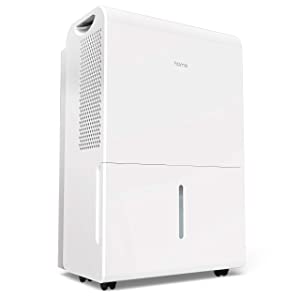
The hOmeLabs company makes a range of dehumidifiers, but we like this one for the garage because of its 70 pint capacity and ability to cover up to 4,000 square feet. It is also styled nicely, with a streamlined shape, rounded edges, and caster wheels and carrying handles for easy movement.
It is Energy Star rated and will cycle on and off as necessary 24 hours a day, which means you can just turn it on and forget it until the tank needs to be emptied. But here, too, you can make life easier by attaching a drainage hose. Unfortunately, the hose does not come included, but the manufacturer recommends a standard 5/8” garden hose with female threaded end. Using a bit of plumbers tape can make that connection even more secure.
This dehumidifier’s fan runs very quietly, but some users have mentioned that the compressor is a bit louder. It also features a washable filter, auto defrost function, touch screen control panel, and timer. You can set your desired humidity anywhere from 35% to 85%.
The built-in collection tank can hold up to six liters (1.9 gallons) before it needs to be emptied, so if you use the tank and have a very humid garage, this could be a daily thing. hOmeLabs offers a two year warranty on this product, with an additional six months for people who register their dehumidifier online.
SPECS:
- 15.4 x 11 x 24.3 inches
- 40 pounds
- 2 year warranty
PROS
- Reduces humidity quickly
- Sleek styling
- Easy to use controls
CONS
-
- Compressor may be noisy
- Tank will need to be emptied frequently
- Drain hose sold separately
Ivation 70 Pint Energy Star Dehumidifier WITH PUMP – Large-Capacity For Spaces Up To 4,500 Sq Ft – Includes Programmable Humidistat, Hose Connector, Auto Shutoff / Restart, Casters & Washable Filter
If you’re looking for a dehumidifier with a built in pump to direct water, check out this Ivation model. The 16W pump can move water up to 16 feet vertically so that it can be emptied continually into a utility sink or out a window. However, the containment bucket is roomy if you choose not to attach a hose – it can hold up to 1.3 gallons before needing to be emptied.
This dehumidifier is an affordable unit for the features you get. It covers areas up to 4,500 square feet and is Energy Star certified. The easy to use LED display shows humidity levels, fan speed, and maintenance alerts, as well as allows for programming of the timer function.
At 40 pounds, the Ivation weighs about the average for dehumidifiers of this size. It is mounted on casters to make it easy to move around if need be. In the humid days of summer, it can remove up to 70 pints of water from the air per day. The machine comes with a six foot long cord and washable filter.

The frost sensor powers off the compressor when the coils ice over but keeps the fan running to help melt it; this model does not have a hot gas de-icing feature. It is able to restart automatically after a power outage, though, which can be a handy bonus. Two fan speeds allow for more control of your dehumidifier settings.
SPECS:
- 15.4 x 10.8 x 23.2 inches
- 39.7 pounds
- 1 year warranty
PROS
- Pump feature included
- Light and easy to move
- Built-in humidistat
CONS
-
- Initial setup is a little bit tricky
- Hose may leak a bit at the connection point
- Plastic rather than metal construction
Dri-Eaz F413 Revolution LGR Dehumidifier, 12.5 inches
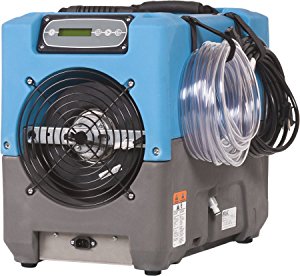
Another great option with included pump is the Dri-Eaz F413. This can be used industrially as well as at home, and it dehumidifies a really large area – 7,000 square feet. Despite its power, it has a small frame only 12.5 inches across and 21.5 inches deep. It is a bit heavier at 60 pounds, but that is due to its very sturdy construction. A nice feature that you may not have considered is the clear hose, which makes it very easy to see if water is draining properly. Other features include an automatic restart function, humidistat, and touch pad controls.
With its built-in humidistat and automatic pump, the Dri-Eaz is simple to read, set, and drain. It can pull up to 80 pints of water per day and makes short work of dehumidifying, quickly returning your garage to a comfortable level (typically 35-50% for the comfort of most people). Construction and repair professionals also often choose this brand to dry out spaces that have been recently flooded. This is an excellent model to use if your garage gets quite cold, as it functions well in temps as low as 33°F.
The compact size makes it really easy to fit anywhere, so it could be a worthwhile investment if open floor space is at a premium in your garage. Built tough in the USA, Dri-Eaz humidifiers feature the company’s legendary rugged rotomolded housing for durability. The warranty is stellar – owners enjoy a lifetime limited warranty on the polyethylene housing. The compressor and coils are covered for 6 years, and parts and labor are backed for one year from the date of purchase.
SPECS:
- 12.5 x 21.5 x 12.5 inches
- 60 pounds
- 6 year warranty
PROS
- Smaller size
- Works quickly
- Includes built-in pump and hose
CONS
-
- No hot gas de-icing capacity
- Hose may leak a bit at the connection point
- On the heavy side
Frigidaire 70-Pint Dehumidifier with Effortless Humidity Control, White
This Frigidaire dehumidifier employs something it calls “Effortless Humidity Control” to allow owners to set the exact percentage of humidity for the room in increments of 5%. The continuous drainage hose is included with your purchase, though it is a gravity model machine so the water must be directed downwards. If this setup won’t work for you, the containment bucket can hold up to 1.6 gallons.
The Frigidaire uses a 115V electrical outlet and is Energy Star rated to keep those power bills down. It can ably pull up to 70 pints of water from the air per day and includes a digital humidistat and timer function. It works in temperatures as low as 41° F, which is fairly standard in dehumidifiers of this size. The display is fairly intuitive, and once you have the settings just as you like, there is a control lock that keeps them saved so that bumping or moving the unit won’t accidentally change anything.
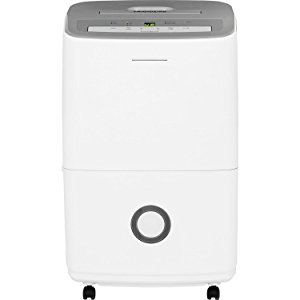
Though the casing is plastic, it is quite sturdy and the entire dehumidifier weighs in at 47 pounds. It is designed with portability in mind, including a top handle and caster wheels to keep it portable. This Frigidaire dehumidifier warranty covers everything for one year, but also guarantees the compressor, condenser, and other internal components for five years.
SPECS:
- 11.6 x 15 x 24.4 inches
- 47 pounds
- 1 year full warranty; 5 years on compressor and condenser
PROS
- Includes drainage hose
- Easy to move around
- Digital humidity readout
CONS
-
- No hot gas de-icing capacity
- No pump; gravity drained
- Gets warm upon use
Danby DDR070BDWDB Energy Star 70 pint Dehumidifier
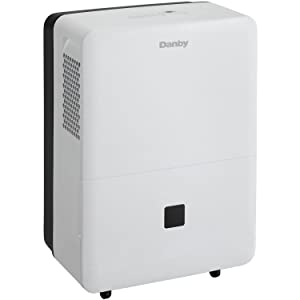
The Danby dehumidifier gets great reviews for its all-around ease of use. It is able to factor in the ambient room temperature to automatically set the ideal humidity level. However, you can set it to your preference regardless, as well as toggle between two fan speeds. You can feel confident that this unit will handle garages up to 4,500 square feet, and it can work in temperatures as low as 41° via the built-in de-icing system.
The Danby pulls 70 pints of moisture per day, if needed, and features a 12.7 pint collection tank. You will be happier using the direct drainage function, unless you spend all day in the garage and don’t mind emptying the tank every few hours. (There is an alert beep and full tank indictor light to let you know when it gets full.) If you use the hose, know that it is a gravity model and you will need to direct the water downward.
The removable air filter is washable to cut down on the maintenance costs of running this unit. It is an energy efficient device, which helps as well. Caster wheels make it easy to move around. This product comes with a two year warranty.
SPECS:
- 11.8 x 16.1 x 24.2 inches
- 41 pounds
- 2 year warranty
PROS
- Built in de-icer
- Washable air filter
- Smart (automatic) humidity control
CONS
-
- Small collection tank
- No pump; gravity drained
- Compressor may “knock” when it comes on
Buying Guide
With so many humidifiers to choose from it can be hard to choose the best one that is most suited to extract moisture from the air. If you are finding it hard to choose one that will remove the most pints of moisture then perhaps this quick guide can help you decide;
The Best Pick for a Large Garage
All of these dehumidifiers are pretty large but the Dri-Eaz F413 is the most powerful. This is the best dehumidifier for garage that is extremely large since it can effectively extract moisture from the air of rooms up to 7,000sq ft large. it also has the biggest capacity per day since it can extract up to 80 pints of moisture per day.
The Best Gravity Dehumidifier
If your garage does have a slope which you can use to navigate water from the room then a gravity humidifier should be sufficient. There are three gravity dehumidifiers included on our list; the HomeLabs dehumidifier, the Fridgidaire dehumidifier and the Danby DDR070BDWDB dehumidifier. All of these humidifiers are relatively competitive since they are practical for 4,000 – 4,500 square meter room sizes. We do however feel that the Frigidaire is a slightly better pick since this one comes with a five year warranty while the other two only offer a two year warranty.
The Best Pump Dehumidifier
If your garage is not built at a slope, then it is important to invest in a dehumidifier with a pump. Without a pump, you will fail at extracting moisture from the air since the water will continue to pool around the pipe instead of draining away. The Ivation dehumidifier and Dri-Eraz F413 both have pumps. If the Dri-Eraz F413 is a bit too pricey for you then you can definitely choose the Ivation dehumidifier to extract moisture from the air and pump these liquids out of your garage.
What Makes a Garage Damp
Garages tend to suffer from condensation as well as humidity – when humid air touches a cold concrete surface, water droplets will form. Garage condensation problems can occur in both warm and cold weather. A common source of excess moisture is runoff from parked vehicles that have been out in snow or rain.
If you have a refrigerator, freezer, or other appliance running in the garage, that can also create humid conditions when the warm exhaust meets the cold air of the garage. Leaky roofs are another common culprit, and condensation in garage ceiling areas is also seen regularly. A dehumidifier is a good tool to tackle humidity and condensation that occurs from normal use of the garage. However, if you have structural repairs that need to be done, don’t delay as the dehumidifier will have trouble completely compensating for that.
The Problem with Damp Garages
A garage with too much humidity is a problem for two main reasons. First, excess moisture makes it easy for mold, mildew, and various fungi to breed. This growth will damage anything it grows on, including the structural elements of your garage and any stored personal items. Excess condensation and humidity levels in your garage will cause tools, vehicles, and cabinets to rust faster.
Second, the presence of moisture will attract pests. Insects often eat mold, but won’t stop there and can chew holes through wood walls. Larger critters such as mice and rats are then attracted to the area because of those bug-made “doors” and steady supply of insects to eat.
Left unchecked, your garage will eventually teem with mold, mildew, bugs, rodents, critter feces, and dust mites. This stuff can make its way into your home on the air and through tiny cracks in the adjoining wall. All these yucky contaminants present a risk to the health of you and your family. The side effects of a damp garage are bad for both health and comfort, especially if any residents have allergies, respiratory disorders, or compromised immune systems. A dehumidifier for damp garage problems is a smart purchase to ward off the dangerous effects of excess humidity in that space.
Dehumidifier Placement
If you’re wondering where to place a dehumidifier in a garage, the answer will vary based on the size and needs of your individual space. However, in general you want it close to the items you hope to protect, whether that is your tool chest or your vehicles. But each of the dehumidifiers on our list can easily cover spaces larger than the average garage so you don’t need to worry about this too much.
You certainly don’t want to be tripping over your dehumidifier, so if you have a convenient out-of-the-way spot to tuck it into, that’s great. Just don’t block the unit with other stuff, especially the vents, which must remain clear for proper airflow. If you don’t use a drainage hose, you’ll also want to make sure the containment bucket is easily accessed for emptying. In the end, placement is a balancing act between outlet location, drainage location, and the location of your important items. Choosing a model on wheels makes it easy to roll the unit out near your vehicles or garage workshop space as needed.
You are now prepared to choose the best dehumidifier for garage use. It will protect both the structure and the valuable items inside. The garage is a great get-away space for tinkering and building, and also frequently holds a lot of recreational gear that can be prone to rusting. A dehumidifier for garage workshop, bike racks, tool chests, and vehicles is a great investment that not only keeps your expensive gear in top shape, it make the space much more comfortable for hanging out in and enjoying. Now there’s no excuse for avoiding that DIY project!
How Long Should the Dehumidifier Run
The more you run the dehumidifier, the fresher and cleaner your garage will become. But even these handy machines might need an occasional rest. Most of them do come with timers that you can set so your dehumidifier will switch off automatically after a certain amount of time. Ideally, your dehumidifier should run at least 12 hours a day to help keep your garage mold, mildew and odor free. This number does however depend on your garage size. If you have a huge garage, you might want to extend the running time just a little bit.
Final Thoughts
Whether you are getting a good dehumidifier for your garage so you can protect your belongings or want to transform this area into a gaming room, we are sure that you will find what you are looking for right here on our guide. And if you are also looking for a good humidifier for your home or if you need the best humidifier for asthma or allergies then we welcome you to hop over to some of our other guides where you can check out other great gear to help you gain more control over the humidity level of your home.

